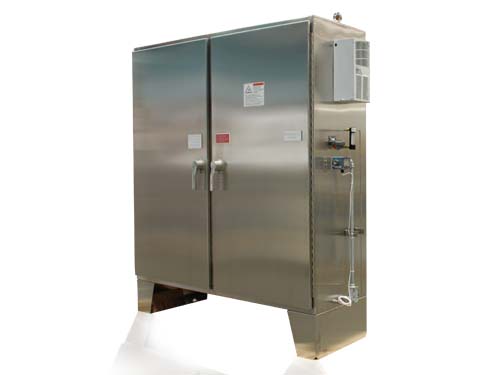Posted on 4th Sep 2023

In industrial automation, PLC components are frequently utilized to manage equipment, procedures, and systems. Despite the fact that this technology is already well recognized, it is still important to understand the fundamental components of a PLC and how they are utilized in today's modern production settings. To help you understand more about PLCs and the several types of industrial equipment that use them, CM Industry Supply Automation - Servo Drive & Servo Motor Expert article will look at the elements of a PLC system, including what they control and how they operate.
PLCs are pieces of computer hardware that are widely employed in control systems and industrial automation applications. Their main responsibility is to take information from operators and end users and turn it into commands and sequences that automated systems can follow.
For more than 50 years, PLCs have been used to automate everything from robotics to CNC machines. These computer-based technologies establish productive workplaces that enable businesses to decrease waste, boost production, and eliminate health and safety risks associated with material processing.
Industries and manufacturers used fundamental PLC components to automate particular systems and processes twenty-five or thirty years ago. Modern factories and shop floors are entirely automated with little involvement from human operators. Machines, assembly lines, and automated industrial processes are managed and controlled by PLC software. Today, PLCs are used in the following sectors:
Oil and Gas
Food and Beverage
Automotive
Pharmaceuticals
Electronics
Transportation
Offroad Construction
There are four key aspects of programmable logic controllers that need to be discussed. Each component functions as a unit to run your automated systems and connect with other devices. Here is a list of each component:
Power Supply
In the PLC system, the power supply accepts and controls electrical voltage. In order for the PLC processor and other modules to send and receive commands, monitor automated machines, and connect with other systems, it turns the electricity into a signal voltage.
Processor
The PLC's brain, the processor module, typically houses one or more microprocessors. The CPU controls, calculates, and instructs the other PLC components on what to do and when. The system memory needed to store applications and supplementary command-line data is also included in the CPU unit.
Communication Card
The industry offers a wide range of communication module standards. They enable PLCs to communicate with the systems they automate as well as with one another. The communication card serves as the PLC system's mouthpiece and ears for everything from computer systems to environmental controls.
I/O Cards for Input/Output
Your PLC unit is connected to other equipment in your facility by I/O cards. Control valves, motor controllers, pressure transmitters, and monitoring systems are some of these gadgets.
I/O cards come in analog and digital varieties. Digital I/O cards employ non-continuous electrical impulses while analog PLC components operate using continuous electrical signals.
CM Industry Supply Automation carries various types of programmable logic controllers, servo drives, Lenze Drive, KEB Drive, Siemens Drive, AC motors, whether you require simple or complex models. All the PLC system components you require from today's top brands and manufacturers are included in our collection of hard-to-find, obsolete, and aftermarket automation parts.